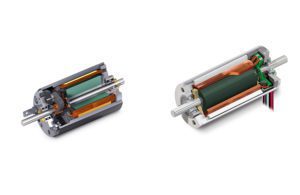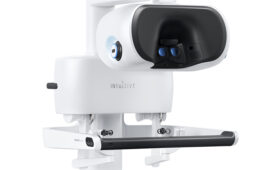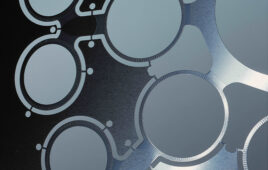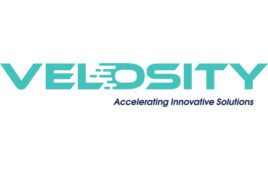Here is an overview of the factors you’ll need to consider when deciding between a DC brushed or brushless motor.
Carsten Horn, Maxon Motor

Maxon Motor DC brushed (left) and brushless (right) motors [Image courtesy of Maxon Motor]
For many applications, the shorter service life of a brush motor is not a concern because it is more than offset by lower cost. Service life can range from 100 to 10,000 hours depending on factors such as current load, speed, vibration and frequency of reversal, with the average around 2,000 hours. A brushless motor, on the other hand, can deliver many tens of thousands of hours of service life.
Another consideration is speed. Typically the maximum speed of brush motors is 20,000 RPM, but in this range, electrical and mechanical wear sharply increases, greatly reducing service life. In practice, brush motors tend to be run below 10,000 RPM. A brushless motor of similar size and magnetic design can be operated at much higher speeds, reaching 100,000 RPM in some cases. These are perfect motors for applications where speed is critical.
But these are generalizations. You’ll have to look at the data sheets for each motor for precise information about speed and torque capabilities.
Ambient conditions are another factor. If electromagnetic interference is a worry, brush motors may not be suitable due to a phenomenon called brush fire. In an explosive gas environment, brush sparks are a serious problem. Brushes made of graphite need humidity and oxygen in the atmosphere to work properly, and produce dust that might pollute clean rooms, high vacuums or optical devices.
For these reasons, most motors in special ambient conditions are brushless. There are no physical brush residue or spark-related emissions. Brushless motors are not inherently explosion proof, but can easily be made so with special modifications. They can be sterilized, operated in ultra-high vacuum applications that require pre-heating and are therefore ideal for medical applications. Brushless motors can also survive high levels of vibration and temperature.
There is no motor as simple to operate as a brush DC motor – just apply a voltage and the motor turns. A brushless motor requires an electronic controller and additional cabling, adding complexity and cost. But this advantage is negated in applications needing higher levels of control, where both brush and brushless motors alike require controllers for motor speed, shaft position or torque feedback.
So whether brushed or brushless, in the end, you have to make the choice based on speed, service life, installation complexity and ambient requirements of your specific application.
Carsten Horn is a business development engineer for medical applications at Maxon Precision Motors, a leading supplier of high-precision drives and systems. Horn studied physics and mechatronics in his native Germany. He headed the product management R&D team at Maxon Germany and focused on the design of components for medical device products. Horn now resides in the United States.




